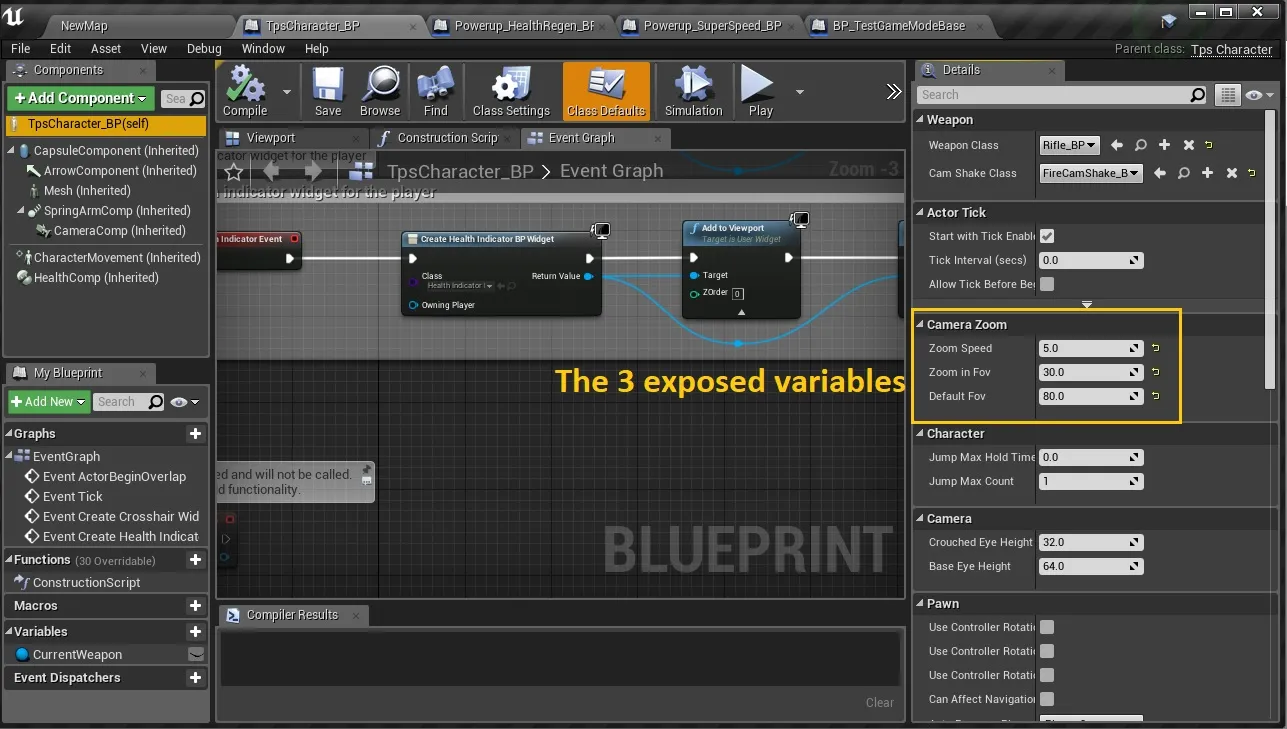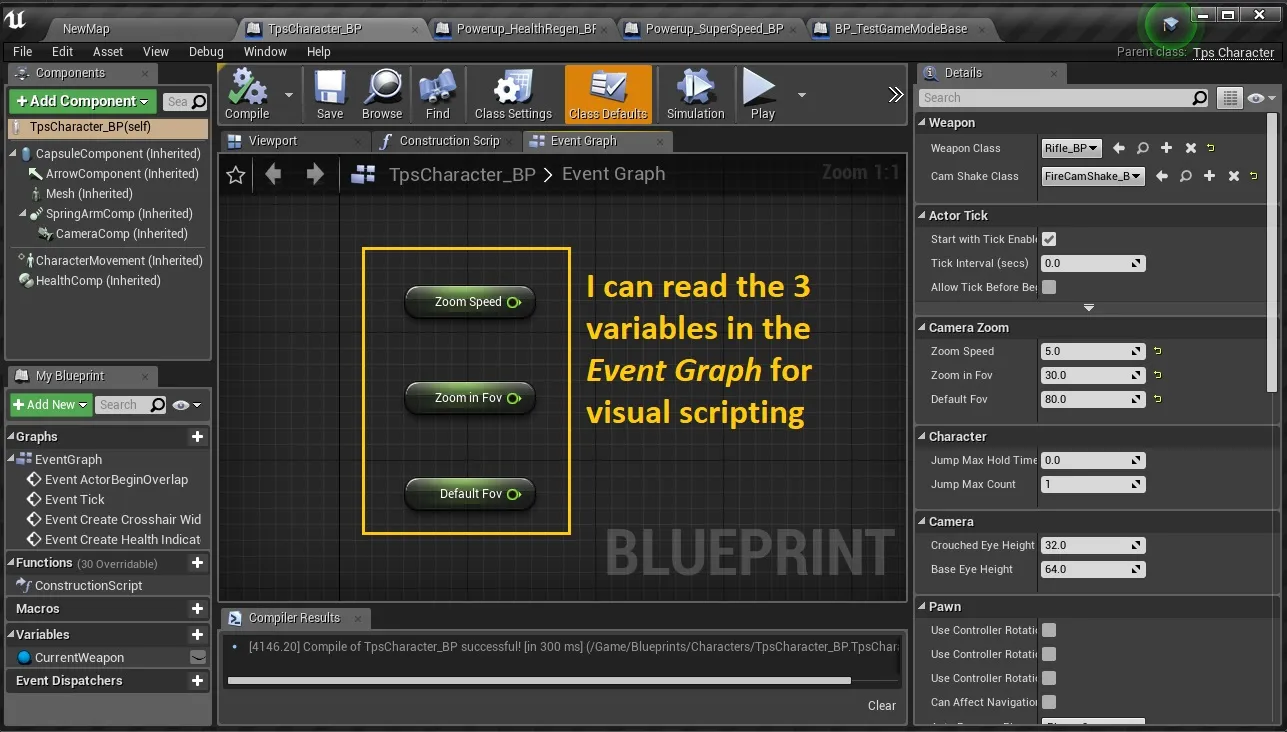UPROPERTY()在蓝图中暴露的C++类成员的可见性和可编辑性。
UE4源代码中的文档(另请参见UE4 wiki,UE4文档)对可编辑性的说明如下:
- 对于
VisibleAnywhere,VisibleInstanceOnly,VisibleDefaultsOnly: - 对于
EditAnywhere,EditInstanceOnly,EditDefaultsOnly: 对于
BlueprintReadOnly:... 可以被蓝图读取,但无法修改。
和
BlueprintReadWrite:... 可以在蓝图中读取或写入。
... 无法进行编辑。
... 可以进行编辑。
问题:
Since the
Visible*specifiers already restrict the usage to read only in Blueprints, why it is used in conjunction withBlueprintReadOnly? Isn't the second specifier superfluous? Example:UPROPERTY(VisibleDefaultsOnly, BlueprintReadOnly) UMyActorComponent* MyActorComponent;Even more confusing is the usage of
Edit*specifiers, which allow read and write in Blueprint, together withBlueprintReadOnlywhich restricts to read only in Blueprint. Aren't both specifiers opposing each other? Example:UPROPERTY(EditAnywhere, BlueprintReadOnly) UMyActorComponent* MyActorComponent;- Are the
Visible*/Edit*specifiers valid in a different context than theBlueprintRead*specifiers? (the question is not aboutInstanceOnly(property windows for instances),DefaultsOnly(property windows for archetypes) andAnywhere(instances & archetypes))

